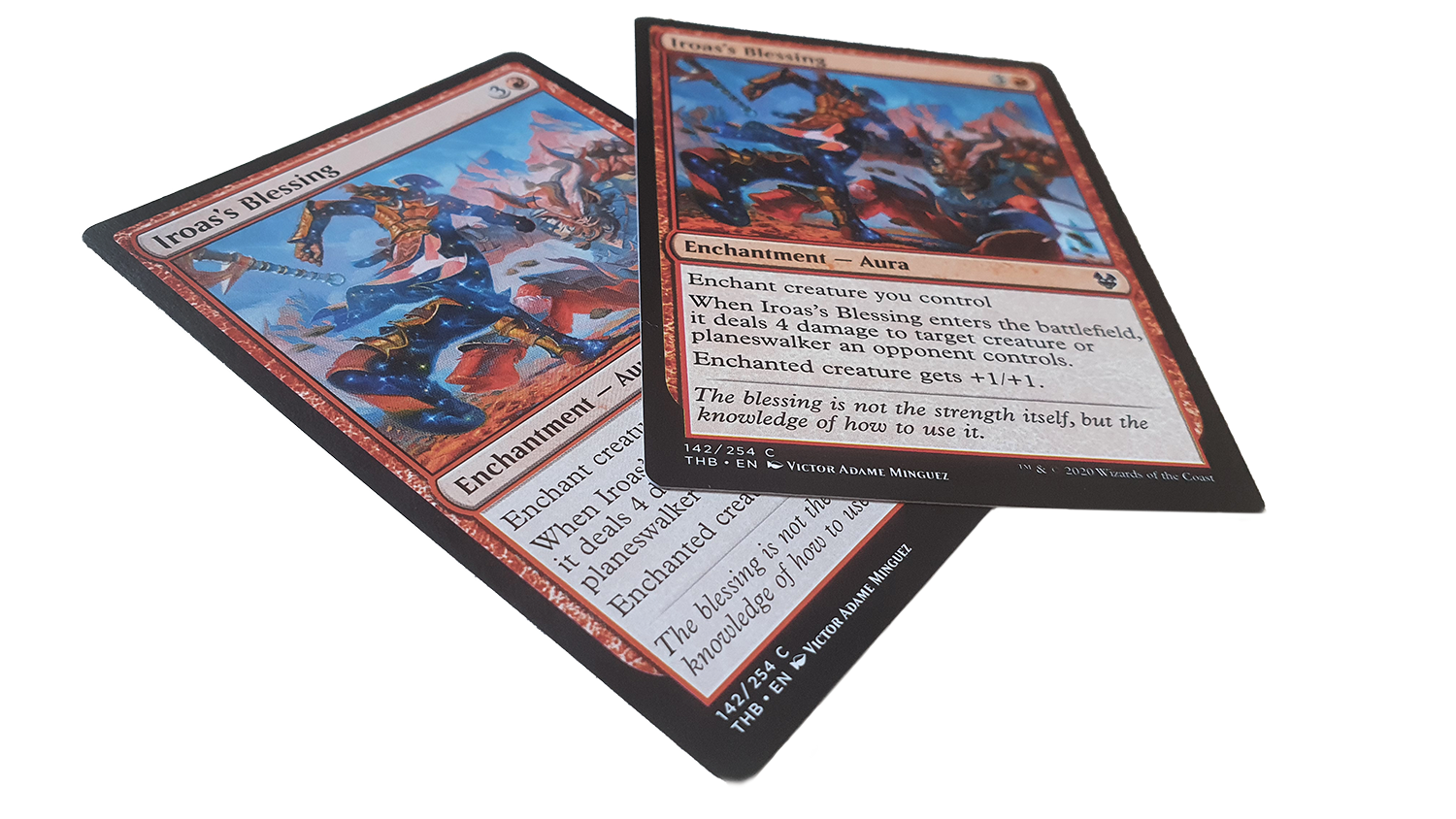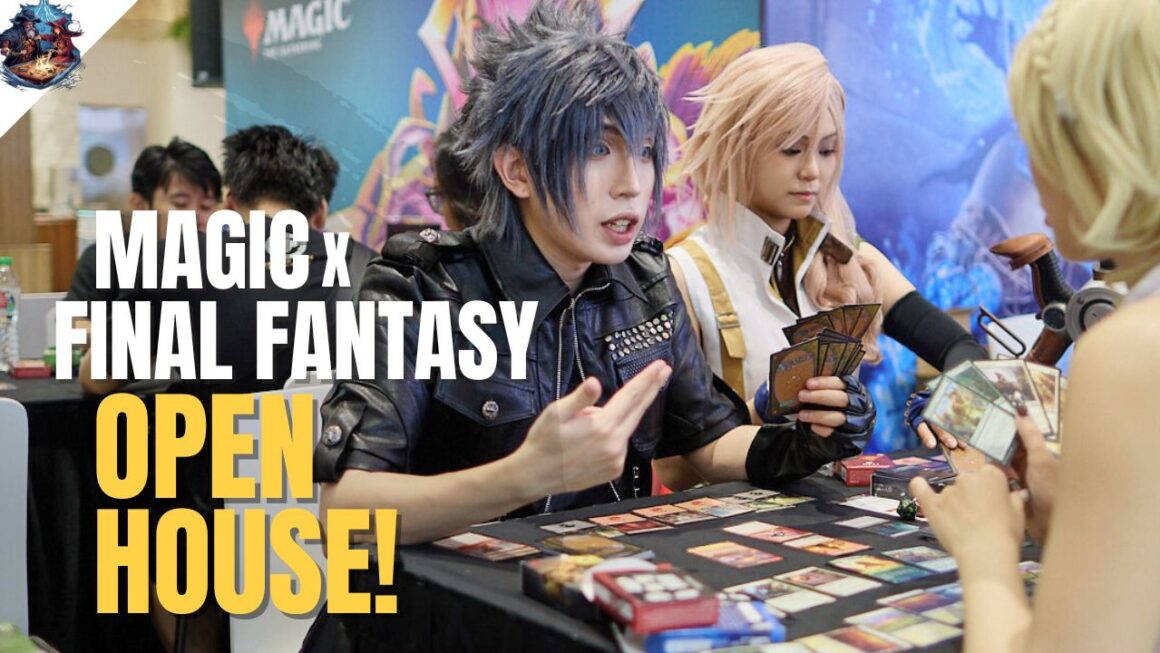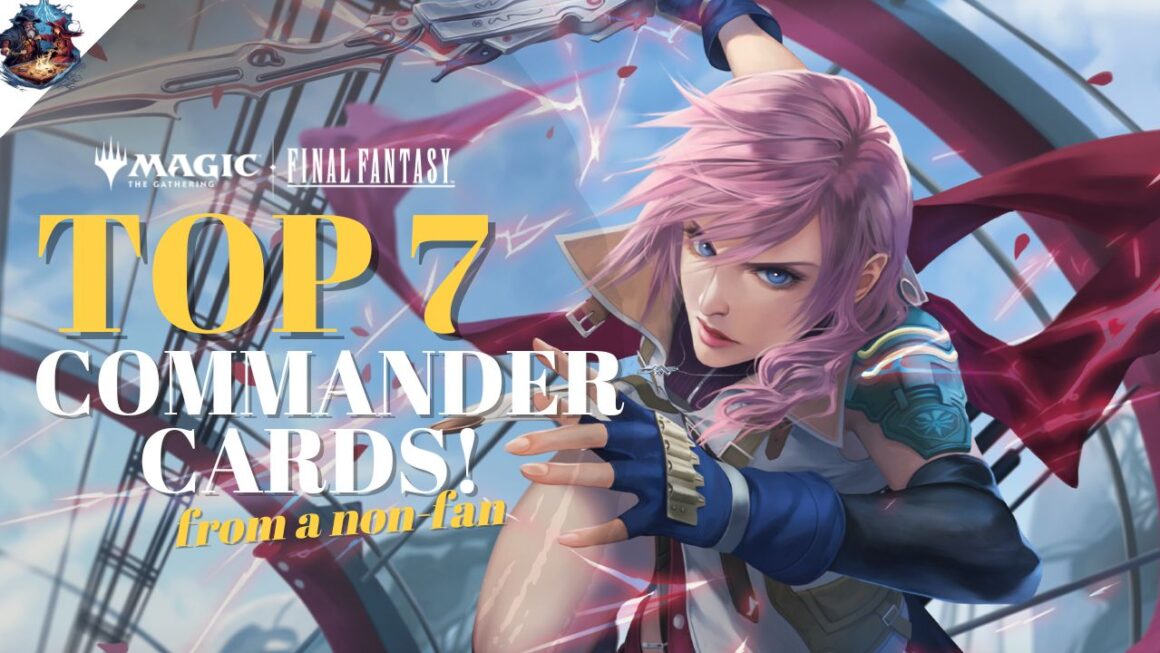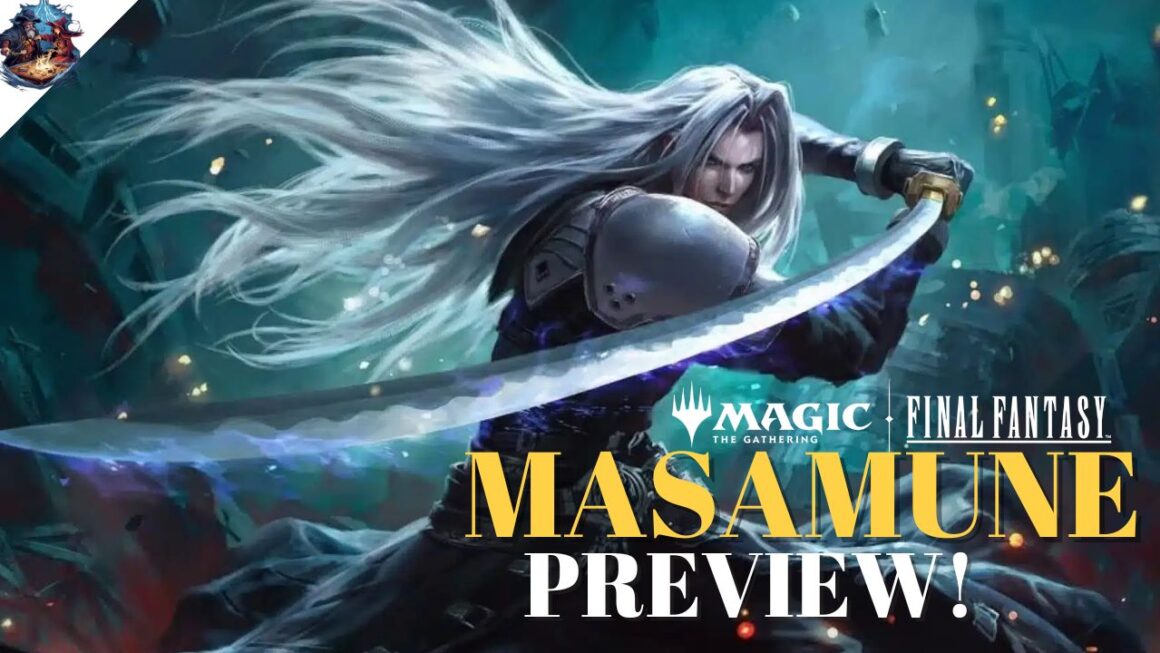After you’ve played paper Magic: the Gathering for awhile, running your fingers over countless cards, and spending some good green buying booster packs and opening them, you may have noticed one thing: some prints are different from others. This is because some may be Japanese prints.
Why are there differences in English-language paper Magic when the source material all comes from one place (Wizards of the Coast)? It’s because, Magic being as big as it is, is printed mainly in two different countries – US and Japan. The US is home to the game’s biggest market, and I wouldn’t be surprised if Japan was second.
For some players, and especially collectors, the print origin matters, mainly because the quality of card stock differs in so many ways. A good proportion of players around the world may even be oblivious that there are different prints out there. To be able to tell the difference and have an idea of its print origin, you’ll need a good eye for detail, and some knowledge of the product’s distribution channels.
Brightness and Contrast: Japanese Prints Are Brighter

Japanese prints have an overall brighter look to the images, as you can see in the reference image above. Contrast should be identical, however because US prints are darker, they also appear to be of higher contrast but this isn’t necessarily so. Put behind a sleeve (especially a matte one), the darker printings are dulled even further, and makes the artwork much less attractive.
Japanese Prints Have More Gloss

When you reflect light on the cards, and tilt the them toward and away from the light, you will notice Japanese prints are slightly glossier. Both printings have a sheen, but any difference we can find is minimal, despite Japanese prints being smoother to the touch.
Smoothness of the Finishing
This is where touch comes in. When you run your fingers over the different card stock, Japanese prints have a slicker surface, almost as though it was laminated with a very thin layer of lacquer. The US prints, on the other hand, are still smooth but feel more like less-polished cardboard.
Order of the Cards Inside the Pack
Most of us will have experienced first hand opening 15-card booster packs. As you run through the cards, Commons may come first, followed by 3 Uncommons, the Rare/Mythic card, a Foil card (if any) and then the Basic Land. Those are US prints.
Japanese Prints have the order reversed (when looking at the cards’ playing side). You’ll first see the Token, then Basic Land, followed by the Foil (if any) and Rare/Mythic card. Lastly come the Uncommons and Commons.
This is perhaps the simplest indicator whether a pack and it cards are of US or Japanese printing. If the other methods of sight, feel and smell doesn’t cut it for you, you can always rely on this method. The only problem is you have to buy and open the pack to find out, which some collectors are not willing to do.
Does it Tell You on the Packaging?
Yes you can! Individual packs, boxes, and cases all indicate if it’s “Made in Japan,” or “Made in USA.”
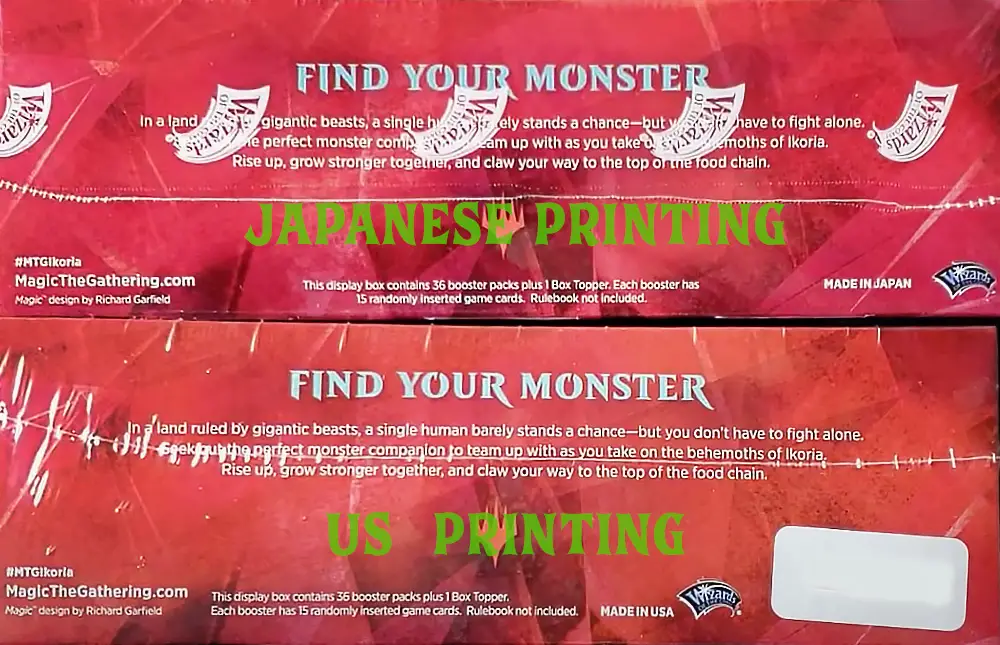
On draft booster pack boxes, look at the sides and bottom. In this example above, from the Ikoria: Lair of Behemoths expansion set, not only is the text layout different, it is explicitly marked at the bottom right if a box is “Made in Japan,” or “Made in US.” The colour saturation and tone is also slightly different on the boxes.
If cases (a set of 6 booster boxes) are your thing, there are also markings on the side that indicate the print origin. Notice that the case with Japanese prints even has Japanese text on the white warning label.
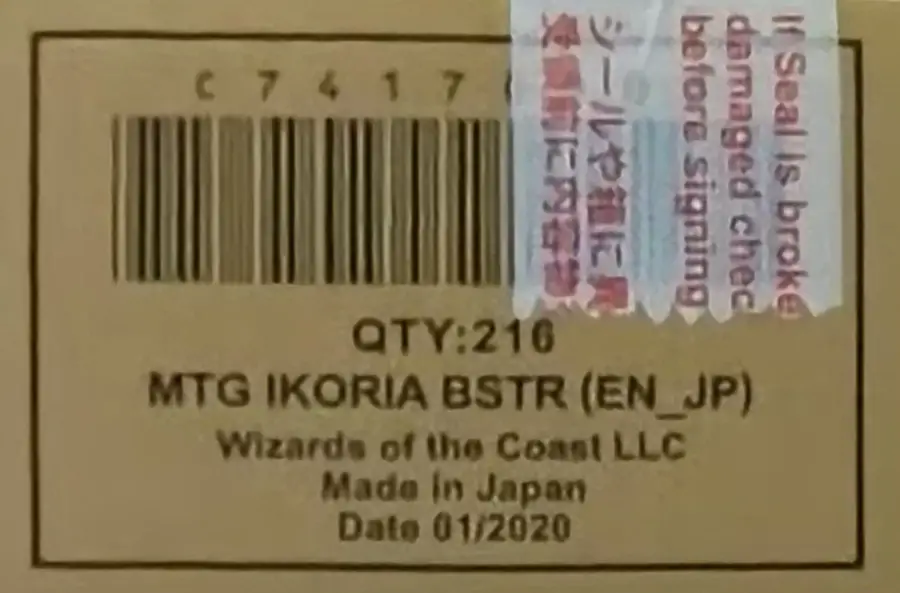
Case with Japanese Printings 
Case with US Printings
Conclusion
To our knowledge, here is a list of English-language products and their known printing origins:
- 1st print run of all expansion set’s booster boxes: Japanese prints
- 2nd and subsequent print runs of booster boxes: Depends on your local game store’s purchasing channels.
- Prerelease Kits: US prints
- Collector Boosters: US prints
- Bundles (formerly known as Fatpacks): US prints
If you have any updated information and would like to share with the wider community, please contact us at tapandsac@gmail.com

